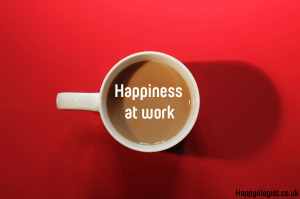The hype has been around for around ten years or so. And if you’re working for an American firm, there’s a decent chance it has hit your company too. I am talking about assigning the title of ‘Chief Happiness Officer’.
It’s more and more common, especially for US-based companies, to rename their leading HR person’s title to Chief Happiness Officer or CHO.
By itself, it’s not a bad thing. If it truly leads to lasting attention for employees’ happiness at work, I do believe it has added value. However, I have a small hunch that in most cases it’s either window-dressing or goofing around.
Google’s former Chief Happiness Officer, is my impression, is a case of goofing around. Their former CHO Chade-Meng Tan formally had a job title ‘Jolly Good Fellow (which nobody can deny)’. While he’s not the only one in tech with a ridiculous job title, his one seems to be one of the most extreme ones. As far as his blog is indicative, his job consisted more of taking pictures with visiting celebrities than of working on staff well-being.
Why are there no Junior Happiness Officers?
Many others seems window-dressing. As the phrase goes, maybe the happiness officer area is a paramount example of ‘too many chiefs, and no Indians’. A quick online search shows there are around 380,000 references to Chief Happiness Officer. For Junior Happiness Officer, there are around 250,000, and many of them are Junior Customer Happiness Officers. So it seems where Chiefs are playing around with employees, the Juniors are taking care of clients while (ab)using happiness as part of corporate branding.
I’ve asked Alex Kjerulf – a happiness at work consultant who goes by the title CHO – why this is the case. The question sparked the following exchange:
@jbergink I've never heard of junior officers anywhere in business. Have you?
— Alexander Kjerulf (@alexkjerulf) April 10, 2016
@jbergink Would be great. The title is always less important than the function, but creating a happy workplace definitely takes a team.
— Alexander Kjerulf (@alexkjerulf) April 11, 2016
@alexkjerulf thanks for sharing your comments. Completely agree on that and hope companies work according to this vision.
— Jasper Bergink (@jbergink) April 11, 2016
His answers stem me more mildly. Indeed, if there is an HR team with a consistent focus on employees’ well-being, it is not the title that matters. What is really important is the creation of a culture where employees get feedback, have a path to development, and are given a healthy dose of freedom in organising their work. All these things are fairly obvious, but still important, and they could be forgotten in the day to day reality of getting work done.
For the time being, I’ll consider asking my boss if I can get a Junior Happiness Officer title. I might be the only one around.

